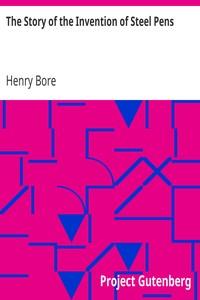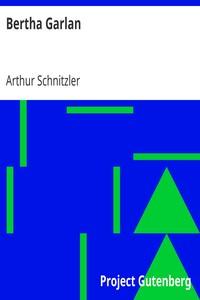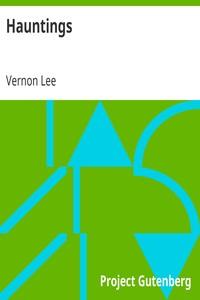Read this ebook for free! No credit card needed, absolutely nothing to pay.
Words: 19595 in 5 pages
This is an ebook sharing website. You can read the uploaded ebooks for free here. No credit cards needed, nothing to pay. If you want to own a digital copy of the ebook, or want to read offline with your favorite ebook-reader, then you can choose to buy and download the ebook.


: The Story of the Invention of Steel Pens With a Description of the Manufacturing Process by Which They Are Produced by Bore Henry - Pens
THE STORY OF THE INVENTION OF STEEL PENS
WITH A DESCRIPTION OF THE MANUFACTURING PROCESS BY WHICH THEY ARE PRODUCED
BY HENRY BORE LONDON
In these days of Public Schools and extended facilities for popular education it would be difficult to find many people unaccustomed to the use of steel pens, but although the manufacture of this article by presses and tools must have been introduced during the first quarter of the present century, the inquirer after knowledge would scarcely find a dozen persons who could give any definite information as to when, where, and by whom this invention was made. Less than two decades ago there were three men living who could have answered this question, but two of them passed away without making any sign, and the third--Sir Josiah Mason--has left on record that his friend and patron--Mr. Samuel Harrison--about the year 1780, made a steel pen for Dr. Priestley.
This interesting fact does not contribute anything toward solving the question, Who was the first manufacturer of steel pens by mechanical appliances? In the absence of any definite information, the balance of testimony tends to prove that steel pens were first made by tools, worked by a screw press, about the beginning of the third decade of the present century, and the names associated with their manufacture were John Mitchell, Joseph Gillott, and Josiah Mason, each, in his own way, doing something toward perfecting the manufacture by mechanical means.
The earliest references to pens are probably those in the Bible, and are to be found in Judges v. 14, 1st Kings xxi. 8, Job xix. 24, Psalm xlv. 1., Isaiah viii. 1, Jeremiah viii. 8 and xvii. 1. But these chiefly refer to the iron stylus, though the first in Jeremiah--taken in reference to the mention of a penknife, xxxvi. 23--would seem to imply that a reed was in use at that period.
There is a reference to "pen and ink" in the 3d Epistle of John xiii. 5, which was written about A.D. 85, and as pens made in brass and silver were used in the Greek and Roman Empires at that time, it is probable that a metallic pen or reed was alluded to.
Pens and reeds made in the precious metals and bronze appear to have been in use at the commencement of the present era. The following are a few notable instances:
This was probably a silver reed, and, from the locality in which it was found, was once the property of the poet Ovid. Publius Ovidius Naso was born in the year 43 B.C., and died 18 A.D. He was exiled at the age of 30 to Tomi, a town south of the delta of the Danube. This at present is in modern Bulgaria, but at the period mentioned was in the ancient kingdom of Hungary.
"' Plate I26 Plume en bronze, taillee parfaitement a la facon de nos plumes 0.13 cent.
"' Plate I26 Plume en roseau trouvee pres d'un papyrus a Herculaneum.'
"The former is engraved to look like an ordinary reed pen, as now used universally in the East; and the other has a spear shape, or almond shape , but with a sort of fillet or ring on the stem, which indicates that the 'y' example is not a reed, but a metallic stylus, or pen, while the 'v' example is shown clearly as a 'reed.' The two are, however, certainly older than A.D. 79, when Pompeii and Herculaneum were buried by the eruption of Vesuvius."
Free books android app tbrJar TBR JAR Read Free books online gutenberg
More posts by @FreeBooks

: Woman's Institute Library of Cookery. Volume 1: Essentials of Cookery; Cereals; Bread; Hot Breads by Woman S Institute Of Domestic Arts And Sciences - Cooking American Cookbooks and Cooking








